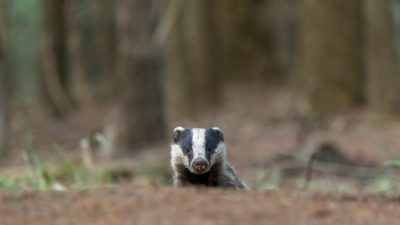Humane Animal Control
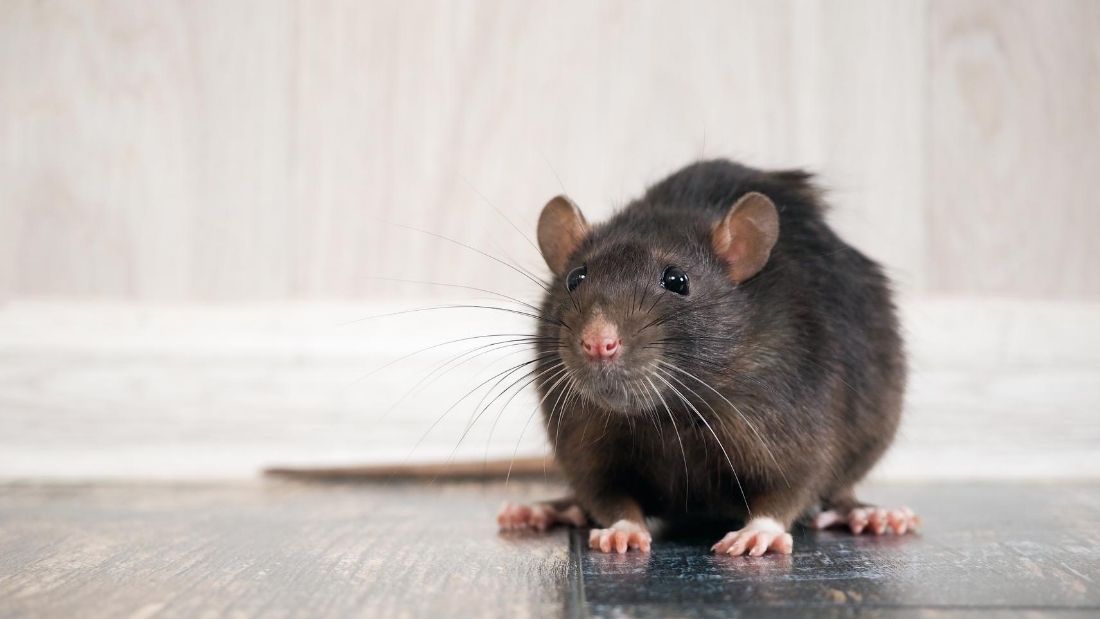
It’s every vegan’s worst nightmare. The day when you find those little tell-tale signs that you’re sharing your home with little unwanted guests — rats and mice! But having a rodent infestation needn’t come at the cost of your ethics. There are many humane ways to deal with rats and mice which are quick and effective and without causing them harm.
How do I know if I have a rodent problem?
If you’re reading this, you probably already know you have a rodent problem! Some tell-tale signs include faeces, urine, chewed packets, chewed wires, scratching or scurrying noises coming from under floors, walls or cabinets and of course, seeing mice or rats.
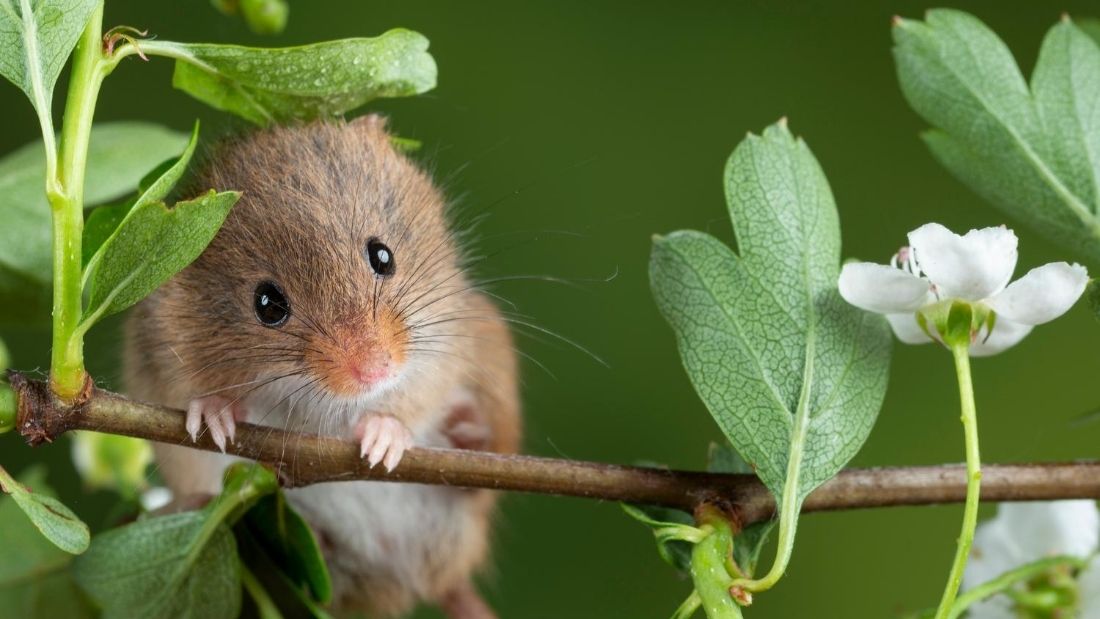
Understanding rodent behaviour
Before we get into the humane ways to deal with a rodent problem, it’s important to understand the behaviour of mice and rats. Not only will this help you deal with the rodents quickly and effectively and prevent the issue from happening again, it’s also important to remind ourselves that rodents are thinking, feeling, highly intelligent, sociable creatures and clearly we don’t want to make them suffer.
Movement and behaviour patterns
Aside from the obvious differences in the size of rats and mice, there are some key differences between the two rodents which are important to consider when dealing with a rodent problem.
You can’t blame mice and rats for nesting in your home, they are only trying to survive and find somewhere safe to live. Rats are considered non-seasonal animals25Tavolaro, F.M., Thomson, L.M., Ross, A.W., Morgan, P.J., and Helfer, G. (2014) ‘Photoperiodic Effects on Seasonal Physiology, Reproductive Status and Hypothalamic Gene Expression in Young Male F344 Rats’. Journal of Neuroendocrinology. 27: 79–87 and mice can breed all year round,26Konig, B., and Lindholm, A.K., (2012) ‘The complex social environment of female house mice (Mus domesticus.)’ In: Macholan et al. Evolution of the House Mouse. Cambridge: Cambridge University Press, 114-134. and so both species will be on the lookout for somewhere safe and secluded to nest, no matter the time of year.27Pocock, M.J.O, Searle, J.B., and White, P.C.L., (2004) ‘Adaptations of animals to commensal habitats: population dynamics of house mice Mus musculus domesticus on farms’. Journal of Animal Ecology 73: 878 – 888 In winter, they may look for somewhere warm and so be extra vigilant in sealing up holes near heaters, walls and other cosy spots. In summer they may nest somewhere cooler, such as under the floors and under decking. Either way, rats and mice are some of the most adaptable species.28Vadell, M.V., Gómez Villafañe, I.E., and Cavia, R. (2014) ‘Are life-history strategies of Norway rats (Rattus norvegicus) and house mice (Mus musculus) dependent on environmental characteristics?’. Wildlife Research 41(2) 172-184 Both mice and rats tend to keep alongside walls29Jensen, S.P., Gray, S.J., and Hurst, J.L., (2003) ‘How does habitat structure affect activity and use of space among house mice?’. Animal Behaviour 66, 239–250 and corners and will avoid running in open spaces.30Lambert, M.S., Quy, R.J, Smith, R.H., and Cowan, D.P. (2008) ‘The effect of habitat management on home-range size and survival of rural Norway rat populations’. Journal of Applied Ecology, 45, 1753 – 1761
Mice will nest in covered areas and shred soft materials like cardboard or paper, which is why you often find mice in cluttered areas.5Jensen, S.P., Gray, S.J., and Hurst, J.L., (2003) ‘How does habitat structure affect activity and use of space among house mice?’. Animal Behaviour 66, 239–25031Timm, R.M. (1994) ‘House Mice’. The Handbook: Prevention and Control of Wildlife Damage. 4. Their nests provide shelter from the elements and predators.32Jirkof, P. (2014). ‘Burrowing and nest building behavior as indicators of well-being in mice’. Journal of Neuroscience Methods, 234:139-146. They can squeeze through a hole the size of a pen (or about the size of a coin) and are excellent climbers and swimmers.33Witmer, G.W., and Jojola, S.M. (2006) ‘What’s Up with House Mice? A Review’. Proceedings of the Vertebrate Pest Conference, 22(22) This means they can find tiny gaps into your home and wriggle their way to find somewhere secluded to live. They are nocturnal so will be most active during the night.9Witmer, G.W., and Jojola, S.M. (2006) ‘What’s Up with House Mice? A Review’. Proceedings of the Vertebrate Pest Conference, 22(22) Mice will nest near a food source and can survive with little or no water,7Timm, R.M. (1994) ‘House Mice’. The Handbook: Prevention and Control of Wildlife Damage. 4. so a hidden corner near an open bag of pet food is ideal!
Rats nest as well, but an important difference is that rats burrow and have been known to dig extensive burrow systems for nesting and storing food.34Manser, C.E., Broom, D.M., Overend, p>, and Morris, T.H. (1998) ‘Investigations into the preferences of laboratory rats for nest-boxes and nesting materials’. Laboratory Animals 32, 23-3535Nieder, L., Cagnin, M., and Parisi, V. (1982) ‘Burrowing and feeding behaviour in the rat’. Animal Behaviour 30 (3): 837-84436Boice, R. (1977). ‘Burrows of wild and albino rats: Effects of domestication, outdoor raising, age, experience, and maternal state’. Journal of Comparative and Physiological Psychology, 91(3), 649–661 This means they can dig under buildings and fences and will shred materials to create nests, such as insulation and cardboard.37Timm. R.M. (1994) ‘Norway Rats’. The Handbook: Prevention and Control of Wildlife Damage. 5. They burrow and make nests in hard-to-reach places or covered areas, such as in cavity walls, crawl spaces and under decking.6Lambert, M.S., Quy, R.J, Smith, R.H., and Cowan, D.P. (2008) ‘The effect of habitat management on home-range size and survival of rural Norway rat populations’. Journal of Applied Ecology, 45, 1753 – 1761 Typically, rats follow the same paths and trails each day and usually stay within 300 feet of their burrow.14Galef, B.G., and Buckley, L.L. (1996) ‘Use of foraging trails by Norway rats’ Animal Behaviour, 51:765–771 Like mice, rats are nocturnal, although there is some evidence that their feeding patterns depend on the availability of food and frequency of disturbance.15Campi, K.L., and Krubitzer, L. (2010) ‘Comparative Studies of Diurnal and Nocturnal Rodents: Differences in Lifestyle Result in Alterations in Cortical Field Size and Number’. The Journal of Comparative Neurology. 15; 518(22): 4491–4512.16Klemann, N. and Pelz, H.-J. (2006) ‘The feeding pattern of the Norway rat (Rattus norvegicus) in two differently structured habitats on a farm’. Applied Animal Behaviour Science. 97 (2–4): 293 – 302 Rats are strong swimmers, even better than mice.17Whishaw, I.Q., and Tomie, J.-A. (1996) ‘Of Mice and Mazes: Similarities Between Mice and Rats on Dry Land But Not Water Mazes’. Physiology & Behavior 60 (5): 1191 – 1197 Rats hoard food and so will often grab food and run back to the burrow.18Whishaw. I.Q., and Tomie, J.-A. (1989) ‘Food-pellet size modifies the hoarding behavior of foraging rats’. Psychobiology 17 (1), 93 – 101
Curiosity and cautiousness
Rats are inherently suspicious of new foods,19Mitchell, D. (1976) ‘Experiments on Neophobia in Wild and Laboratory Rats: A Reevaluation’. Journal of Comparative and Physiological Psychology 90(2):190-7 which is known as ‘neophobia’20Cowan, P.E (1977). ‘Neophobia and neophilia: New-object and new-place reactions of three Rattus species’. Journal of Comparative and Physiological Psychology, 91(1), 63–71. — a fear of new things. This means that rats will try a little bit of the new food, wait a number of days, and then approach the food again. This is another reason why rat poisons often don’t work — the rats simply don’t eat enough of it. But this cautiousness doesn’t just apply to food, rats are naturally very suspicious about new things in general, which is why often rat traps do not work.21Stryjek, R., Modlińska K., and Pisula, W. (2012) ‘Species Specific Behavioural Patterns (Digging and Swimming) and Reaction to Novel Objects in Wild Type, Wistar, Sprague-Dawley and Brown Norway Rats’. PLoS One. 7(7): e40642. It’s important to bear this in mind when setting humane traps, as rats will avoid the trap at first until they have learned to trust it. So, you will need to be patient. Rats will however eat new foods if they observe members of their social group eating the food,3822Galef, B.G., and White, D.J. (1997) ‘Socially acquired information reduces Norway rats’ latencies to find food’. Animal Behaviour 54: 705 – 71423Galef, B.G., and Whiskin, E.E. (2007) ‘’Conformity’ in Norway rats?’ Animal Behaviour 75: 2035 – 2039[/mfn] so it may be best to lay unset humane traps first.
Mice on the other hand, are far less cautious about new foods and objects. They like to explore and investigate new things24Singleton, G.R., and Krebs, C.J. (2006) ‘The Secret World of Wild Mice’. The Mouse in Biomedical Research, 2nd Edition. Academic Press. and so are easier to catch in humane traps. So if your humane mouse trap isn’t working, it’s likely that you’ve set it in the wrong place.
Did you know?
Rats are very intelligent creatures. They have been known to out-perform humans in cognitive tests.25Vermaercke, B., Cop, E., Willems, S., D’Hooge, R., and Op de Beeck, H.P. (2014). ‘More complex brains are not always better: rats outperform humans in implicit category-based generalization by implementing a similarity-based strategy’. Psychonomic Bulletin & Review, 21 (4), 1080-6 PMID: 24408657 They can learn their names and a whole host of tricks, enough to perform a little rodent acrobatics show! They are social creatures,26Schweinfurth, M.K. (2020) ‘The social life of Norway rats (Rattus norvegicus)’ School of Psychology and Neuroscience. eLife 2020;9:e54020. Accessed: https://elifesciences.org/articles/54020 living in complex communities where they individually recognise each other, food share, groom and huddle.27Schweinfurth, M.K., Neuenschwander, J., Engqvist, L., Schneeberger, K., Rentsch, A.K., Gygax, M., and Taborsky, M. (2017) ‘Do female Norway rats form social bonds?’ Behavioral Ecology and Sociobiology 71: 98 Rats are very empathetic and will choose to rescue a trapped friend instead of retrieving their favourite food.28Bartal, I.B.-A., Decety, J., and Mason, P. (2011) ‘Helping a cagemate in need: empathy and pro-social behavior in rats’. Science. 334(6061): 1427–1430. They love to be tickled and make ultrasonic noises which sound like laughing!
Sick and dying behaviour
If you opt for rat poison, an incredibly cruel way to deal with a rodent problem, you will likely cause yourself a secondary issue — decomposing rats in hard to reach areas, and the smells and flies which follow. As we’ve seen, rodents nest in secluded, hard to reach areas, and will retreat to the nest if they are unwell. They will usually suppress the signs and symptoms of illness29Brisbane Bird & Exotics Veterinary Service (2019) ‘Signs of Illness in Rodents’ Available at: https://bbevs.com.au/signs-of-illness-in-rodents/. [Accessed 26 May 2020] until they physically can’t anymore. They will become lethargic, stop eating and will quarantine themselves from the group.30Kaplan, S. (2016) ‘Mice quarantine themselves when sick — a lesson for us all’ Available at https://www.washingtonpost.com/news/speaking-of-science/wp/2016/08/23/mice-quarantine-themselves-when-sick-a-lesson-for-us-all/ [Accessed 26 May 2020] The rest of the group can detect sickness behaviour and so will move away from the individual,31Klein, S.L., and Nelson, R.J. (2010) ‘Social Behavior and Parasites’. Encyclopedia of Animal Behavior (216-225) perhaps to nest somewhere else in your home.

What’s wrong with traps and poison?
Both traps and poison are incredibly inhumane and result in slow painful deaths.
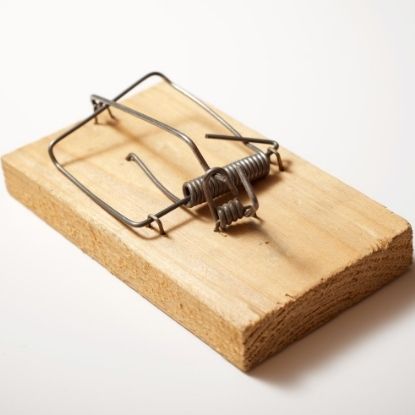
Snap Trap
One of the most well-known traps is the ‘snap trap’. These lure rodents over with bits of food which triggers the trap, causing a metal bar to ‘snap’ down. Producers of snap-traps claim that the animal dies quickly with very little pain, but this is often not the case. All sorts of things can go wrong with the trap; it can be set incorrectly, the animal could be in the wrong position or the snap mechanism may weaken and cause the trap to malfunction. In these instances, the metal bar will snap down and trap, injure and maim the animal, leaving them to die a slow and painful death. Even worse, the advice to avoid these malfunctions is to pre-bait the trap. In other words, leave food out without setting the trap to entice the rodent over. Then, once they have learnt to trust the trap, set the trap to kill them.
Glue Trap
Even worse than snap traps, many people choose to use glue traps. They are incredibly cruel and completely unjustifiable. Glue traps are a simple piece of plastic tray or cardboard with a layer of glue on top. They are placed in areas where there are known to be rats and mice. When a mouse walks over the trap, they get stuck. They are then left to die a slow agonising death, extremely distressed and desperately trying to escape. The animal may die of dehydration, hunger, exhaustion, stress or suffocation if their face gets caught in the glue. Animals have been known to break or chew off limbs in their attempt to get free. It can take several days for the animal to die and if their screams of distress are heard, many people will simply dump the live animal in the bin. It’s also not just mice that get caught in the trap, they can trap any animal which walks over it, including birds and squirrels. No matter whether you consider an animal a ‘pest’ or not, no creature deserves to die like that.
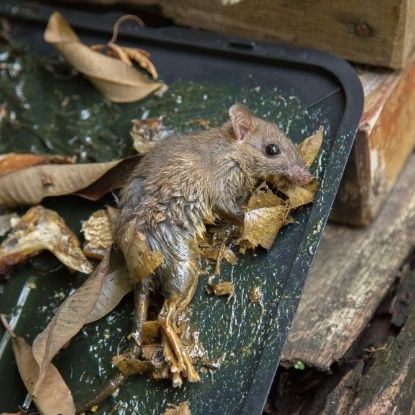
What to do if you find a mouse in a glue trap
Gently and carefully pour a little vegetable oil or baby oil onto the glue. Gently rub the oil into the glue to free the mouse. Depending on the condition of the animal, it can be released or may need veterinary assistance.

Poison
There are three types of poison used, calcium releasers, anticoagulants and acute toxins. They work in different ways; calcium releasers cause a build up of calcium and subsequent organ failure, anticoagulants cause internal bleeding, and the acute toxins stop the rodent’s ability to produce energy or cause a buildup of toxic gases. Either way, the death will be slow, painful and often not very effective. Poisons also put other animals at risk, including companion animals such as dogs and cats, if they consume or come into contact with the poison itself or the rat. Additionally, rats which have eaten the poison may still enter your home to return to their nests. They may move around in search of water, due to severe dehydration, but often will die in hidden, hard to reach places, leaving you with a new kind of problem — decomposing rats and flies.
Rodent Zapper
This is a newer type of trap which is often marketed as ‘humane’. The trap is baited with food, the mouse or rat enters and then is electrocuted. In reality, many of these traps do not work as intended and the rodent receives repeated electrocutions without dying.


What are the ethical alternatives?
Before we delve into dealing with a rodent problem, it’s important to note that the best strategy for rodent infestations is to prevent them altogether. Even if you use humane traps, if you don’t address the root problem, rodents will continue getting into your home.
Top tip!
Seal up any holes around your home, especially around kitchen cabinets and fridges, doorways, fireplaces, pipes, vents and basements or crawl spaces. Remember, mice can crawl through even the smallest holes, so be vigilant. The best way to seal these holes is with steel wool, as rodents can’t chew through it. Larger holes can be filled with cement or metal sheeting and vents can be covered with mesh. It’s also important to remove clutter, such as piles of paper and cardboard, to prevent mice from nesting.
Next, it’s important to remove any food sources which might be encouraging the rats and mice to come into your home. Make sure to clean up crumbs, wipe down surfaces, seal food bags or better yet, keep them in tightly sealed containers, and keep cupboards and bins closed, with no holes to rodents to squeeze through. It’s also important to clear away pet food and keep in fully enclosed, chew-proof containers. Make sure your food waste and other bins have no holes and can’t be accessed by rodents. Make sure your recycling has been thoroughly washed out before putting it outside.
It’s also important to stop animals nesting near the home, so remove garden waste, piles of leaves, stacks of logs, and unclog your gutters. Make sure to keep your garage tidy and ordered, as mice and other rodents can easily nest in stacks of boxed or unused clothes and blankets.
When you have addressed the root cause of the problem, move onto ethical and humane animal control:
1. Humane traps
Humane traps also use food bait to lure rodents in. Although cartoons may lead you to believe that cheese is the best rodent bait, we would actually recommend peanut butter. Not only do rodents seem to like it more, it takes a little more time to eat so there’s less chance the mouse or rat will grab and run. It’s important to place the food well within the trap, ideally at the end, so as not to break their tails.
Based on rodent behaviour, it’s best to put traps along walls and in nesting areas as rats avoid open spaces.If you see lots of evidence of rodents in one particular area, put the traps there. Remember that rats are more cautious than mice, and so you need to be patient and replace the food each day.
The most important thing is to check the traps regularly, ideally multiple times a day. If you do not check the traps, you are leaving an animal to suffer from stress, dehydration and exposure. This is also important if you are trying to catch more than one mouse or rat, as they are intelligent creatures and so will avoid an object which causes great distress to another animal. If you do catch a rodent, simply let them free a good distance from your house. It’s important to keep within a 90 metre radius of your house, as animals who are relocated beyond their natural area may struggle to find food, water and shelter. Then simply put more bait in and replace the trap.
2. Pest repeller plug-ins
Pest repellers are electronic plug-ins which omit a high frequency sound or vibrations which only mice and rats can hear. The sound is supposed to be very uncomfortable for rodents and so dissuades them from nesting in your home. Please note that it may take multiple plug-ins for your home and some rodents may eventually become accustomed to the noise, so it’s important to protect your home in other ways. It is also a good idea to use plug-ins alongside other humane pest methods and to take this opportunity to rodent-proof your home.
3. Peppermint oil
There is some evidence that peppermint oil is an effective deterrent for rodents. One thing is for sure, peppermint oil is natural and humane. It has a strong smell which is off-putting to rodents and their sensitive noses. You can mix with water and spritz around your home, particularly in areas where you have signs of rodents. You can also dip cotton wool or steel wool into peppermint oil and stuff into holes. This is a great alternative to poison as it won’t damage wildlife, companion animals or the environment. Other essential oils which may ward off rats are citronella (often used to deter insects) and eucalyptus oil.
4. Ammonia
Another deterrent is ammonia, which mimics the scent of urine and so may deter rodents, as they may believe it comes from foxes or cats and run away. Simply mix equal amounts of ammonia with water, place the mixture in cups or soak rags in the mixture. Replace the solution every couple of weeks.
Top tip!
If the humane traps and repellents aren’t working, it’s likely because you haven’t used enough or rodents are still finding their way into your property. It could also be that you’re putting them in the wrong place. Remember, rats and mice like to keep to walls and edges and so place the humane traps there. Try new baits and be persistent.

Red foxes are a fascinating species who are known for being clever, elusive and playful.1Cavallini, P. (1996) Variation in the social system of the red fox. Ethology, Ecology & Evolution 8: 323 – 342 Despite the remarkable nature of these species and many people loving visits from them to their garden, foxes have a bad reputation with others as ‘pests’2Philo, C., and Wilbert, C., (2000) Animal Spaces, Beastly Places. Routledge. for stealing food, digging holes, fouling in gardens, and swiping chickens, rabbits and guinea pigs, and some larger livestock.3Baker, P., Furlong, M., Southern, S., and Harris, S., (2006) The potential impact of red fox Vulpes vulpes predation in agricultural landscapes in lowland Britain. Wildlife Biology, 12(1):39-50 They are incredibly clever and resourceful, so often make their way over (or under!) gates and fences. In fact, they can scale fences which are 6ft high and squeeze through holes 5 inches in diameter.4Wildlife Online ‘Deterring Foxes’ https://www.wildlifeonline.me.uk/articles/view/red-fox-deterrence [Accessed 17 June 2020]
The most important thing to know about foxes is that they are not dangerous and the risk of being attacked by one is very low.5The Royal Borough of Kensington and Chelsea ‘Urban Foxes’ https://www.rbkc.gov.uk/environment/environmental-health/pest-control-service/urban-foxes [Accessed 16 June 2020] Generally, foxes will back away from confrontation and there are no recorded cases of foxes attacking children or babies left in buggies in the garden.6Hastings Borough Council ‘Living with urban foxes’ https://www.hastings.gov.uk/environmentalhealth/pestcontrol/foxes/ [Accessed 16 June 2020] This misconception is due to extensive misleading media speculation.7Cassidy, A., and Mills, B., (2016) “Fox tots attack shock”: Urban foxes, mass media and boundary-breaching. Environmental Communication. There is also a very low chance that foxes will kill companion animals, such as cats.6Hastings Borough Council ‘Living with urban foxes’ https://www.hastings.gov.uk/environmentalhealth/pestcontrol/foxes/ [Accessed 16 June 2020] You cannot get rabies from foxes as this disease has been eliminated from the UK through vaccination programmes.8Vos, A. (2003) Oral vaccination against rabies and the behavioural ecology of the red fox (Vulpes vulpes). J Vet Med B Infect Dis Vet Public Health; 50(10):477-483. If you find a fox, it is best to leave him or her alone.
Additionally, foxes are a protected species9Gov.UK (2016) ‘Foxes, moles and mink: how to protect your property from damage’ https://www.gov.uk/guidance/foxes-moles-and-mink-how-to-protect-your-property-from-damage [Accessed 16 June 2020] so harming them through any means such as poison, gas, stabbing, drowning, clubbing and snaring is a criminal offence, with offenders subject to six months imprisonment and/or a £5000 fine.10The Fox Project ‘Foxes and the Law’ http://foxproject.org.uk/foxes-and-the-law/ [Accessed 17 June 2020] It is illegal to cause unnecessary suffering to foxes. You can’t use birds or other live animals as bait. You cannot block occupied fox dens or hunt foxes with a pack of dogs.11Gov.UK ‘Hunting and shooting wildlife’ https://www.gov.uk/hunting/mammals [Accessed 17 June 2020] You cannot capture and relocate foxes from their natural territory, as this causes unnecessary suffering under the Animal Welfare Act 2006.12Gov.UK (2006) ‘Animal Welfare Act 2006’ http://www.legislation.gov.uk/ukpga/2006/45/contents [Accessed 17 June 2020]
Did you know?
Foxes are not vermin,13The Fox Project ‘The Red Fox’ http://foxproject.org.uk/fox-facts/ [Accessed 17 June 2020] they are not and have never been classified as such by the Department for Environment, Food and Rural Affairs (DEFRA). Furthermore, councils have no legal rights or powers to kill foxes14Wilkinson, D., and Smith, G.C. (2001) A preliminary survey for changes in urban Fox (Vulpes vulpes) densities in England and Wales, and implications for rabies control. Mammal Rev; Volume 31, No. 1, 107–110. and many state that killing foxes is ineffective and costly.15Scott, D.M., Berg, M.J., Tolhurst, B.A., Chauvenet, A.L.M., Smith, G.C., Neaves, K., Lochhead, J., and Baker, P.J. (2014) Changes in the distribution of red foxes (Vulpes vulpes) in urban areas in Great Britain: findings and limitations of a media-driven nationwide survey. PLoS One; 9(6):e99059 Natural England says: “Any foxes, moles and mink that you catch are protected under the Animal Welfare Act 2006. You can be jailed and fined up to £20,000 for causing unnecessary suffering to an animal.”9Gov.UK (2016) ‘Foxes, moles and mink: how to protect your property from damage’ https://www.gov.uk/guidance/foxes-moles-and-mink-how-to-protect-your-property-from-damage [Accessed 16 June 2020]

Understanding fox behaviour
Foxes are an intelligent, adaptable species which can thrive in both rural and urban environments, increasingly being found within cities and towns (Wilkinson and Smith 2001; Scott et al 2014).14Wilkinson, D., and Smith, G.C. (2001) A preliminary survey for changes in urban Fox (Vulpes vulpes) densities in England and Wales, and implications for rabies control. Mammal Rev; Volume 31, No. 1, 107–110.15Scott, D.M., Berg, M.J., Tolhurst, B.A., Chauvenet, A.L.M., Smith, G.C., Neaves, K., Lochhead, J., and Baker, P.J. (2014) Changes in the distribution of red foxes (Vulpes vulpes) in urban areas in Great Britain: findings and limitations of a media-driven nationwide survey. PLoS One; 9(6):e99059 They are omnivorous, meaning they can eat pretty much anything, and are opportunistic feeders, meaning they will generally eat what is available.16Kidawa, D., and Kowalczyk, R. (2011) The effects of sex, age, season and habitat on diet of the red fox Vulpes vulpes in northeastern Poland. Acta Theriologica; 56(3): 209–218. Foxes eat insects, worms, berries, small mammals such as rodents, rabbits and birds,17Baker, P.J., & Harris, S., (2003). A review of the diet of foxes in rural Britain and a preliminary assessment of their impact as a predator. Conservation and Conflict. Mammals and Farming in Britain. Linnean Society Occasional Publication 4. 120-140. but are also known to scavenge for food.18Contesse, P., Hegglin, D., Deplazes, P., Gloor, S., and Bontadina, F. (2004). ‘The diet of urban foxes (Vulpes vulpes) and the availablity of anthropogenic food in the city of Zurich, Switzerland’ Mammalian Biology 25(03) In fact, scavenged food from rubbish bins, takeaway packets and pet food can make up half of their diet.5The Royal Borough of Kensington and Chelsea ‘Urban Foxes’ https://www.rbkc.gov.uk/environment/environmental-health/pest-control-service/urban-foxes [Accessed 16 June 2020]
They are avid diggers, digging dens underground which are known as ‘fox earths’ which provide safe shelter for foxes and their cubs.19Carter, A., Luck, G.W., and Wilson, B.P. (2012) Ecology of the red fox (Vulpes vulpes) in an agricultural landscape. 1. Den-site selection. Australian Mammalogy:: 34, 145–154 Fox dens are most likely to be spotted in overgrown gardens, beneath buildings, such as sheds, and areas with little human disturbance.20Marks, C.A., and Bloomfield, T.E. (2006) Home-range size and selection of natal den and diurnal shelter sites by urban red foxes (Vulpes vulpes) in Melbourne. Wildlife Research; 33, 339–347 Additionally, foxes prefer to dig dens in sandy or well-drained soil, as it prevents the den from becoming waterlogged.19Carter, A., Luck, G.W., and Wilson, B.P. (2012) Ecology of the red fox (Vulpes vulpes) in an agricultural landscape. 1. Den-site selection. Australian Mammalogy:: 34, 145–154 Many foxes will dig more than one den, depending on how many cubs there are within their territory, and move between the dens 21Baker, P.J., Funk, S.M., Harris, S., and White, P.C.L. (2000). Flexible spatial organisation of urban foxes, Vulpes vulpes, before and during an outbreak of sarcoptic mange. Animal Behaviour 59, 127–146. doi:10.1006/anbe.1999.1285 Research has shown that 75% of fox cubs in the London area are born beneath garden sheds and in Bristol, dens are predominantly found in back gardens.21Baker, P.J., Funk, S.M., Harris, S., and White, P.C.L. (2000). Flexible spatial organisation of urban foxes, Vulpes vulpes, before and during an outbreak of sarcoptic mange. Animal Behaviour 59, 127–146. doi:10.1006/anbe.1999.1285 This means that voids under buildings and well-camouflaged gardens provide the perfect den opportunity.
Foxes are known to be a loud species and have a wide range of vocalisations, particularly during mating season in late winter – early spring,22Newton-Fisher, N.E., Harris, S., White, P., and Jones, G.J.F. (1993) Structure and Function of Red Fox Vulpes Vulpes Vocalisations. Bioacoustics, 5 . pp. 1-31. where social groups disperse to find mates.23Baker, P.J., Dowding, C.V., Molony, S.E., White, P.C.L, and Harris, S. (2007) Activity patterns of urban red foxes (Vulpes vulpes) reduce the risk of traffic-induced mortality, Behavioral Ecology, Volume 18, Issue 4, July 2007, Pages 716–724. As foxes are active during the night, mating foxes can often disturb people sleeping nearby with their loud barks and shrieks. Foxes are territorial and live in pairs or groups of three to six adults, under the age of 12 months.8Vos, A. (2003) Oral vaccination against rabies and the behavioural ecology of the red fox (Vulpes vulpes). J Vet Med B Infect Dis Vet Public Health; 50(10):477-483. They mark their territory through scent-marking in a similar way to dogs.24Banks, P.B, Daly, A. and Bytheway, J.P. (2016) Predator odours attract other predators, creating an olfactory web of information. Biology Letters, The Royal Publishing Society; 12(5): 20151053.
The fox population is fairly self-regulating,6Hastings Borough Council ‘Living with urban foxes’ https://www.hastings.gov.uk/environmentalhealth/pestcontrol/foxes/ [Accessed 16 June 2020] with over half the population dying each year. Up to 50% of the UK fox population are killed by cars but generally within twelve months, the population will have recovered.5The Royal Borough of Kensington and Chelsea ‘Urban Foxes’ https://www.rbkc.gov.uk/environment/environmental-health/pest-control-service/urban-foxes [Accessed 16 June 2020] Each litter consists of four to five cubs and the fox cubs are dependent upon the den for a number of weeks.25Robertson, C.P.J., Baker, P.J., and Harris, S. (2000). Ranging behaviour of juvenile red foxes and its implications for management. Acta Theriologica 45, 525–535. However, up to 80% of fox cubs will die before reaching sexual maturity.
Foxes are incredibly playful and inquisitive and have been known to play with dog toys which have been left out in the garden. They can be as friendly as dogs and are just as skillful in learning commands and gestures from humans.26Hare, B., Plyusnina, I., Ignacio, N., Schepina, O., Stepika, A., Wrangham, R., and Trut L. (2005) Social Cognitive Evolution in Captive Foxes Is a Correlated By-Product of Experimental Domestication. Current Biology; Volume 15, Issue 3; 226 – 230 As with other animals, you can’t be angry at foxes for expressing their natural behaviours or following their instincts, they are only trying to survive. But you can put measures in place to stop their behaviour from affecting you.
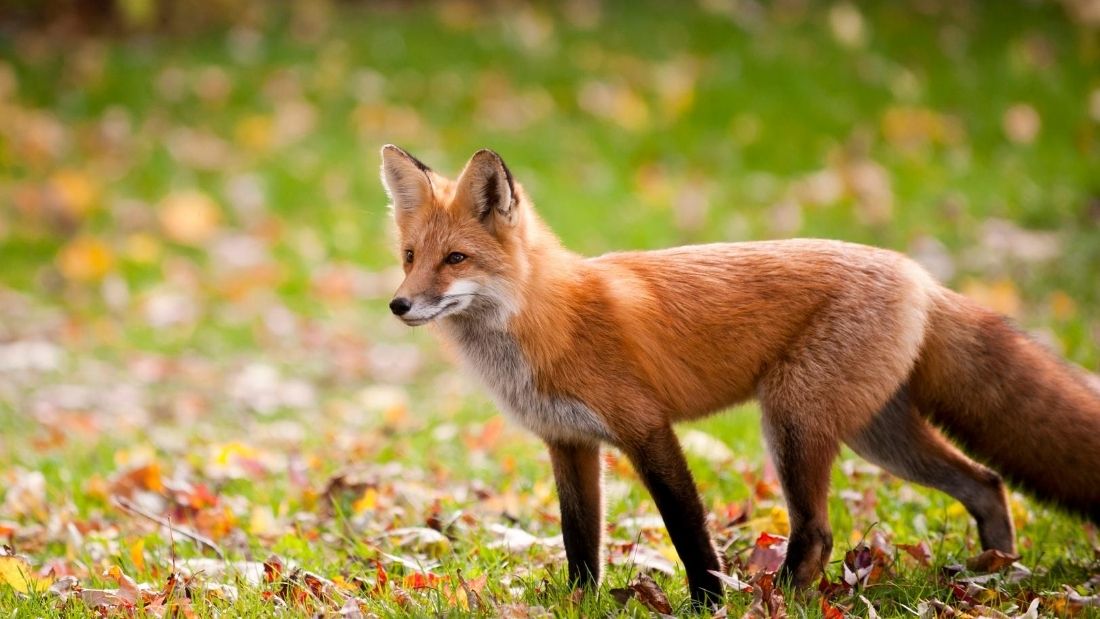
Humane and ethical deterrents
As with other wildlife, it’s best to prevent foxes from becoming a nuisance altogether. Foxes need three key things to survive and thrive in your garden — shelter, food and water. If you identify the best den areas for foxes and seal them up, you will prevent them from digging dens altogether. Remember, it is illegal and incredibly cruel to seal occupied fox dens and so if you find an existing den, you must be 100% sure that it is not occupied before sealing it up. The signs that a den is occupied19Carter, A., Luck, G.W., and Wilson, B.P. (2012) Ecology of the red fox (Vulpes vulpes) in an agricultural landscape. 1. Den-site selection. Australian Mammalogy:: 34, 145–154 include footprints, fox odour, faeces, prey remains or scratch marks in the soil.
Moving onto food, make sure there are no open packets of food in and around your property. Make sure all bins are well sealed and cannot be opened by foxes, and put your recycling out in the morning of collection (not overnight). Generally ensure your garden is tidy and well-kept, and all food sources (including pet food) aren’t left outside. You can put fencing around ponds and other water sources, place netting over water sources during the night, or make it difficult for the fox to water sources such as bird baths.
If you grow veggies in your garden, always use vegan fertilisers as opposed to ones made from blood, fish, slaughterhouse waste and bone meal, as these will attract foxes. In fact, vegan or ‘stock free’ gardening is an all-round safer, healthier and more sustainable way to grow food— so it’s a win-win! If you have rabbits or guinea pigs, do not leave them unsecured in your garden at night time. Make sure their cage is secure and can’t be easily unlocked or nudged open. Foxes can chew through chicken wire so make sure their hutch is built with a strong metal mesh.
The best way to deter foxes from living in your garden is to use humane repellants. Like dogs, foxes will scent mark their territory. By spraying artificial non-toxic repellants on plants, grass and other affected areas, you can humanely deter foxes from entering your garden. According to Fox-a-gon, foxes will avoid unknown scent marks and may leave the area straight away. However, this method does require some persistence as if the fox feels their territory is threatened, they may hold their ground and increase scent-marking before finding somewhere else to live. You can also soak rags in the deterrent and loosely place around known fox dens.If you would prefer not to use chemical sprays, you can use motion activated water sprinklers to deter foxes.

Slugs
Slugs can ruin any budding veganic gardener’s day. They can destroy entire plants, eating holes into the stems, bulbs, leaves and flowers — it’s no wonder they have a bad reputation. But slugs are only behaving naturally, it’s not their fault that their dinner also happens to be your vegetable patch!
Slugs are molluscs who mostly feed at night, prefer damp conditions, and leave behind those tell-tale slime trails. They can eat a wide range of veggies but lettuce, beans, peas, celery and potatoes are most at risk. Slugs are also an important part of the composting process and many species feed mostly on decomposing leaves and other plant matter.
As slugs are so abundant and prolific in gardens, it’s near impossible to eradicate them completely. Instead, you should accept that we share our outdoor spaces with slugs and try to dissuade them from eating your most vulnerable plants. By remaining vigilant and putting preventative measures in place, you can encourage slugs to stay away from your vegetable patch.
Why not use slug pellets, salt or beer?
Slugs will naturally avoid salt as it dehydrates them. Although it can be tricky to understand how slugs feel, we know that salt causes rapid dehydration and, in short, causes their bodies to dissolve. We know that they recoil from salt and writhe about until they die if it’s poured on them. If that’s not enough to convince you, try pouring salt into your eye to see if it hurts.
Similarly, metaldehyde pellets work by dehydrating slugs but even worse, it can be fatal to birds, companion animals and other wildlife.
Beer traps work by enticing slugs and then trapping them until they drown.
These are all incredibly cruel ways to deal with a slug problem, especially when humane alternatives exist.
These solutions are not only more humane, they are non-toxic and so better for the environment, flora and fauna too. They are best used in combination.
1. Picking slugs
Sounds obvious, but often the simplest solution is often the best one! Pick off the slugs and move them far away (about 20 metres) from your veggies. Slugs won’t be able to find their way back at that distance. You can also bait the slugs, placing damp cardboard or stones to collect them.
2. Avoid watering your plants in the evening
As slugs are nocturnal, you want to avoid providing nice damp plants to munch on during their active hours! Water your plants in the morning instead and you should see a decrease in slug numbers.
3. Coffee
The secret to a slug-free garden is coffee. You can either make some really strong coffee and pour in the affected area or sprinkle coffee granules over your garden. Slugs can’t stand caffeine!
4. Natural deterrents
Other natural deterrents include mint, sage, parsley and lemon balm.
5. Rough textures
It’s suggested that slugs avoid rough and sharp textures, so line your garden with granite or other rough materials.
6. Humane traps
Fruit such as scooped out oranges, melon and grapefruit can be laid cut-side down to attract and trap slugs. Check them regularly and then move the slugs elsewhere.
7. Alternative feeding
Plant some delicious lettuce to entice the slugs over. If you create a slug haven, it will detract them from your other veggies! This also makes it easier to catch and remove slugs from your garden.
8. Encouraging other wildlife in the garden
If your garden is very bird-friendly, or attracts hedgehogs, frogs, slow worms and centipedes, you’ll notice a decrease in the number of slugs as these are their natural predators.
Insects
Wouldn’t hurt a fly? Just like slugs in our gardens, a whole host of insects can find their way into our homes and make nuisances of themselves. As always, there are natural repellents which are better for insects, your conscience and for the environment.
Can insects feel pain?
Contrary to popular belief, the answer is most likely yes.The reason that some people argue that insects don’t feel pain is that they have a simple nervous system compared to our own.
But basic tests, such as the avoidance test to see whether insects avoid potentially painful stimuli (heat, cold, injury) does suggest that insects will avoid painful experiences. There is also evidence that insects feel chronic pain.
There is still much to be learned, but the current evidence suggests that insects can feel pain, even if their perception is different to our own.
Flies
The best repellents are lavender, mint and basil. You can grow them on your windowsill or place around your house, or use a few drops of lavender, eucalyptus, peppermint or lemon grass essential oil. You can move flies out of your home by turning off the lights, keeping rooms dark and opening windows to encourage them to fly towards the light. There are also humane bug catchers which act as little low-powered vacuums to suck up the bugs and allow you to move them outside.
Wasps and Bees
Both bees and wasps play important roles in our ecosystems; the former is essential for pollination and the latter are important insect predators, eating flies and ticks. Some people suggest using sprigs of cedar and eucalyptus can to deter bees and wasps. Hang the sprigs in doorways and windows, bulbs of garlic can also be used.
Ants
As always, it’s best to prevent ants coming into your home by cleaning up food, crumbs and keeping rubbish bins sealed. But if ants have already set-up camp in your house, determine where the ants are entering your home and seal up the holes. Then, pour a line of paprika, cinnamon or red chilli powder to prevent the ants crossing the line and into your home. You can also thoroughly wash floors and surfaces with water-vinegar solution, particularly in areas with ant trails. There is some suggestion that coffee granules, mint, garlic, peppermint oil and lemon can deter ants. Simply place at the entry points to your home.
Did you know?
Wasps and ants have alarm pheromones — which signal to the group that they have been killed, injured, or are under attack?
Cockroaches
Like other insects, it’s best to be proactive to prevent cockroaches; sealing food containers, cleaning up food and crumbs, emptying recycling and storing outside, cleaning and sweeping floors and sealing up cracks and holes. It’s even more important to keep things clean and tidy before going to bed. In terms of repelling cockroaches, some people suggest placing catnip, cucumber or bay leaves in high-up places around your house to deter cockroaches.
Woodlice
Woodlice play a vital role in decomposition and so it’s best to remove them from your home, not to kill them. Normally found in damp areas, like piles of leaves, stacks of wood and under rocks, they can on occasion find their way indoors. Woodlice can actually be the first sign that you have a damp issue in your home and so it’s important to find the source and fix it. If there are no other signs of damp, seal up holes, clean your gutters and clear away any rotting plant matter — such as stacks of leaves — from outside your home. It has been suggested that cinnamon, peppermint, citrus and oregano essential oils are particularly effective in deterring woodlice.
Moths
The good news for us vegans is that moth larvae are most attracted to wool and silk as they’re after the keratin found in animal hair, and so will avoid cotton and synthetic materials unless blended with animal fibres. It’s still good practice to regularly vacuum wardrobes and closets, and even the harder-to-reach carpeted areas. You can also use cedar blocks to repel moths and fill fabric pouches with tea bags, bay leaves, and essential oils like lavender, mint, rosemary, thyme, cloves and eucalyptus.
Spiders
We personally can’t see what’s wrong with sharing your home with spiders. In the UK, they are harmless creatures who naturally capture and eat other insects, saving you a job! But if you would like to avoid spiders in your home, you can make a peppermint oil or citrus solution (10 – 15 drops of oil in a spray bottle with water) and spritz around windows and door frames. You can also rub lemon directly on your window frames and doors. You can also use the classic cup and paper catch and release method!
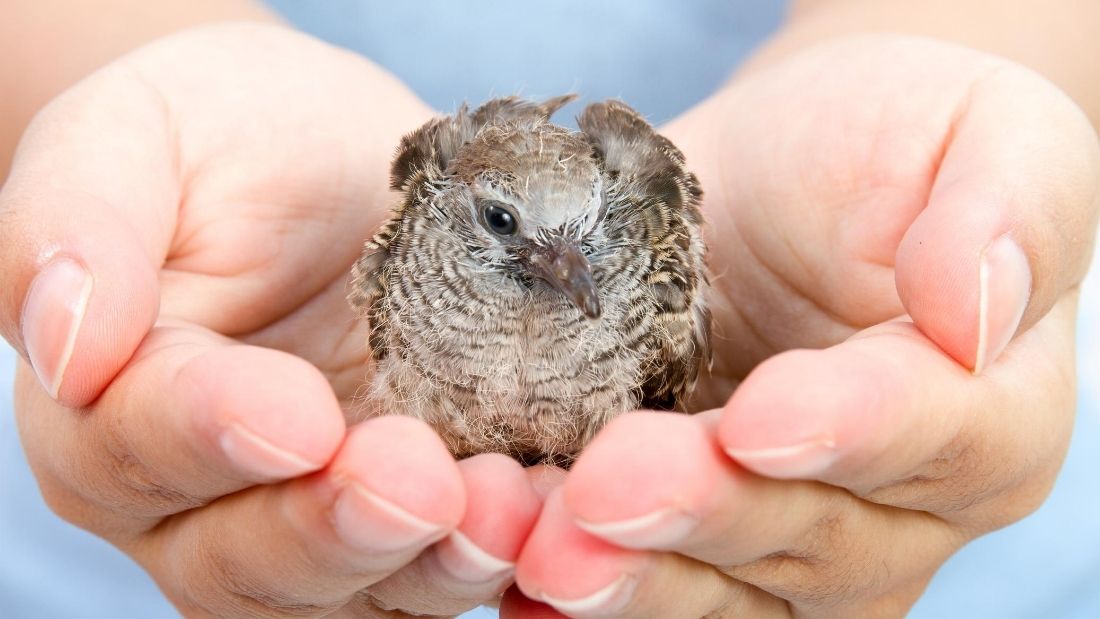
We may as well have called this section “what to do if you find a baby bird” as it’s one of the most common questions about wildlife rescue. Regardless of whether you’ve found a bird, a hedgehog, a fox or any other wildlife, it’s best to call your local vet or wildlife rescue centre who can advise you.
It’s quite normal to see baby birds on their own as fledglings explore beyond the nest before they’re able to fly. Most likely, their parents are nearby and hidden out of view, or are keeping a watchful eye at a distance. The parent birds can be frightened by your presence and so it is best to leave the fledgling alone. Do not return the fledgling to the nest. It’s best to watch the fledgling from a short distance to see if the parents return and to determine whether it is injured. If they haven’t returned within two hours, contact your local wildlife rescue centre.
If the fledgling is in the path of danger, you can move them to somewhere safe. But, it must be within hearing distance of where you found the baby bird, as the parents will try to locate it. Removing birds and other wildlife from the wild has to be a last resort.
You may come across a younger baby bird, known as a nestling. You can tell if a baby bird is a nestling or a fledgling by looking at its feathers. If it’s unfeathered or covered in a fluffy down, it is a nestling. Nestlings will not live for very long outside the nest and so if the nest is in sight and is easy to reach, you can gently return the nestling. But it’s important to check for injuries and signs of sickness. Sometimes parents will eject sick and dying baby birds to allow them to focus on the other nestlings and so returning a bird to the nest can threaten the other nestlings. It’s best to contact your local wildlife rescue centre if you are unsure what to do.
If you are certain the bird is in immediate danger and must be taken to a wildlife rehabilitation centre, you can capture the bird and place it into a well ventilated box. Make sure to wear gloves and line the box with a towel or newspaper. Do not feed the bird and immediately contact your local wildlife rescue centre.
The same rules apply to other injured wildlife. Watch the animal from a safe distance to determine whether it needs human intervention. Call your local vet or wildlife centre and follow their advice.





